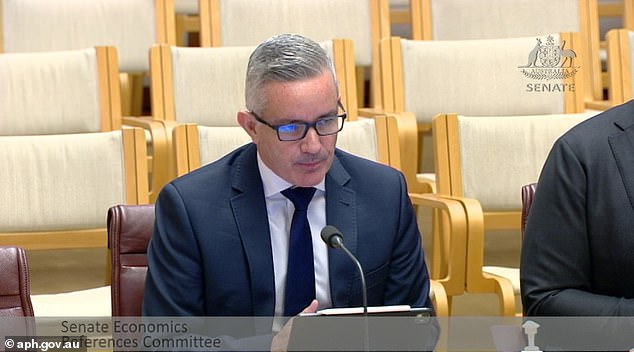Major bank reveals the big problem stopping young Aussies buying a home – and what must change to bring the property market back into line
- NAB director wants change in credit rule
A major bank has accused existing lending rules of stopping young Australians from buying their first home during a housing crisis.
Andy Kerr, NAB’s head of housing, has told a Senate hearing that the rules need to be changed, with new entrants to property making up less than a third of the market as house prices continue to rise.
Banks must now reject applications for home loans if their calculations show that a borrower cannot cope with interest rates rising twelve times.
Most interest rate increases are by 25 basis points or a quarter of a percentage point.
With financial markets expecting interest rate cuts in 2025, this would deter many young Australians from getting a home loan, depriving them of the opportunity to own their own home while prices continue to rise and lock them out of the market forever.
“A lower maintenance buffer for first-home buyers could improve their borrowing power,” Kerr told the parliamentary economics committee on Thursday.
“While we believe housing availability is a fundamental issue, it is important that all options are now on the table so we can meaningfully improve access to credit for Australians in a responsible way.”
Liberal Senator Andrew Bragg, an opposition advocate on homeownership, said the existing usability buffer “hurts early homeownership.”
A major bank blames existing lending rules for stopping young Australians from buying their first home (pictured is a Sydney homebuyer)
House prices in Brisbane, Perth and Adelaide have risen by double digits in the past year.
High levels of interstate migration have boosted real estate markets in the capitals, despite aggressive interest rate increases, as immigration-fueled population growth creates a housing shortage.
Since October 2021, Australian banks have been required to model a potential borrower’s ability to cope with a three percentage point increase in variable mortgage rates.
But in 2022 and 2023, interest rates rose by 4.25 percentage points, while the Reserve Bank of Australia raised the cash rate 13 times to a 12-year high of 4.35 percent.
This was the most dramatic tightening of monetary policy since the late 1980s.
The prospect of rate cuts in 2025 could lead Australia’s Prudential Regulation Authority to revisit the rules it introduced three years ago, when the RBA cash rate was still at a record low 0.1 percent.
“We believe this would represent a modest increase in the borrowing capacity of first-home buyers,” Kerr said.
“We believe that any implementation of a change would require a different consideration of other credit risks.
‘We do see an opportunity to work in a targeted manner with regulators and government and look at modest changes in the buffer for first home buyers, which would provide a modest increase in borrowing power.’
Lenders must also consider other obligations of potential borrowers, including the debts associated with their contributions to higher education.
“We also welcome the opportunity for government and regulators to consider how changes to the lending framework can help first home buyers, including how HECS debt is assessed,” Mr Kerr said.

Andy Kerr, NAB’s chief executive of home ownership, has told a Senate hearing that the rules should be changed
First-home buyers made up just 31.2 percent of borrowers in August, Australian Bureau of Statistics credit data shows.
Mr Kerr is calling for an increase in income ceilings for the Home Guarantee Scheme, which would allow a first home buyer to buy a home with a 5 per cent mortgage deposit, while taxpayers underwrite the remainder of the 20 per cent deposit usually required for a home loan. to avoid having to pay the lenders’ mortgage insurance.
“To enable more people to access this scheme, NAB supports increasing the current income ceilings, which have remained unchanged since 2020,” he said.
Australia’s major banks expect the RBA to provide relief soon, with the Commonwealth Bank forecasting the first rate cut in December, while NAB, ANZ and Westpac forecast an easing of monetary policy in February.
